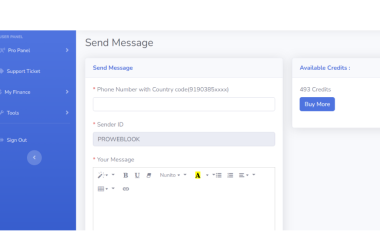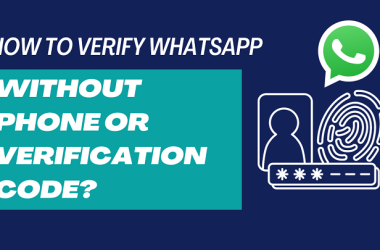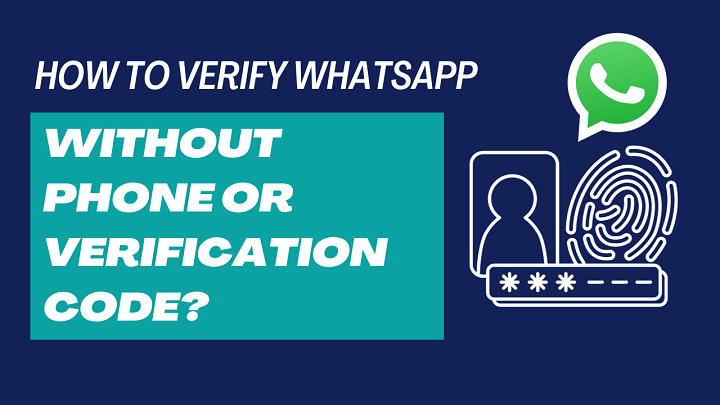Introduction
In today’s digital world, WhatsApp has become an essential communication tool for individuals and businesses alike. Whether it’s for personal use, customer service, or marketing campaigns, ensuring that a phone number is registered on WhatsApp before sending a message is crucial. Traditionally, verifying a WhatsApp number required sending an OTP (One-Time Password) to the user, which they had to enter manually. However, with new technological advancements, it is now possible to verify a phone number’s WhatsApp status without sending an OTP.
This breakthrough eliminates the need for user intervention, streamlining the verification process for businesses and developers. In this article, we will explore how WhatsApp number verification works without an OTP, its benefits, and how businesses can integrate this technology to enhance their operations.
Understanding WhatsApp Number Verification
WhatsApp verification typically involves sending an OTP to a phone number and requiring the user to enter it within the app to confirm their registration. This process ensures that only the owner of the phone number can activate WhatsApp on their device. However, businesses and developers often need to verify numbers in bulk without disrupting the user experience.
With the advent of unofficial APIs and number lookup services, it is now possible to check if a phone number is active on WhatsApp without needing to send an OTP. These solutions use different methods, such as querying WhatsApp’s database or analyzing metadata, to determine whether a number is registered on the platform.
How WhatsApp Number Verification Without OTP Works
Several third-party services now offer WhatsApp number verification without OTP. Here’s how the process generally works:
- API Integration – Businesses or developers integrate an API into their system to check the WhatsApp status of phone numbers.
- Query Execution – The API sends a request to check whether the number is active on WhatsApp.
- Response Processing – The API returns a response indicating whether the number is associated with a WhatsApp account.
- Action Based on Response – Businesses can then decide whether to proceed with sending messages, making calls, or engaging with the user.
This process is seamless, real-time, and eliminates the need for manual verification by end users.
Benefits of WhatsApp Number Verification Without OTP
By bypassing the OTP requirement, businesses and developers gain several advantages, including:
1. Faster Verification
Without the need to send an OTP and wait for the user’s input, businesses can verify numbers almost instantly. This speeds up workflows and improves efficiency.
2. Improved User Experience
Customers no longer have to manually enter OTPs, reducing friction in the verification process. This is particularly useful for businesses that need to verify numbers in bulk.
3. Reduced Costs
Sending OTPs via SMS or phone calls incurs costs, especially when dealing with international numbers. Eliminating this step reduces expenses associated with verification.
4. Bulk Verification
Businesses that need to verify thousands of numbers can now do so without requiring user intervention, making large-scale operations more manageable.
5. Fraud Prevention
By verifying numbers without OTP, businesses can quickly detect and filter out invalid or fake numbers before engaging with them, reducing fraudulent activities.
Best Use Cases for WhatsApp Number Verification Without OTP
This new verification method is particularly beneficial in various industries, including:
1. Marketing and Lead Generation
Businesses running WhatsApp-based marketing campaigns can check if a phone number is active before sending messages, ensuring higher engagement rates.
2. E-commerce and Customer Support
E-commerce platforms and customer service centers can verify customers’ WhatsApp numbers before reaching out for order confirmations or support queries.
3. Financial and Banking Services
Banks and financial institutions can verify whether a customer’s registered number is on WhatsApp before initiating secure communications.
4. Telecom and Messaging Services
Companies offering messaging services can validate numbers in bulk to optimize their operations.
ProWebLook’s WhatsApp Number Checker API: A Reliable Solution
One of the most promising services offering WhatsApp number verification without OTP is ProWebLook’s WhatsApp Number Checker API. This API allows businesses and developers to check whether a phone number is registered on WhatsApp without sending a verification message or OTP.
Features of ProWebLook’s API
- Real-time verification of WhatsApp numbers.
- Bulk number verification capabilities.
- Easy integration with existing systems.
- Accurate and reliable results.
- Affordable pricing compared to SMS-based OTP verification.
How to Use ProWebLook’s API
To integrate ProWebLook’s API into your system, follow these steps:
- Sign Up – Register for an account on ProWebLook’s platform.
- Obtain API Credentials – Get the necessary API keys for authentication.
- Integrate the API – Use the provided documentation to integrate the API into your application.
- Start Verifying Numbers – Make API requests to check whether a number is active on WhatsApp.
Legal and Ethical Considerations
While verifying numbers without OTP is convenient, businesses must ensure compliance with privacy laws and WhatsApp’s policies. Here are some best practices:
- Obtain user consent before verifying their number.
- Use the API only for legitimate business purposes.
- Ensure data protection and do not store or misuse customer information.
Conclusion
WhatsApp number verification without OTP is a game-changer for businesses and developers. It offers a faster, cost-effective, and seamless way to check whether a number is active on WhatsApp without requiring user intervention. With reliable solutions like ProWebLook’s WhatsApp Number Checker API, businesses can optimize their marketing efforts, customer interactions, and fraud prevention strategies.
As technology continues to evolve, such innovations will pave the way for more efficient communication and user verification methods. However, businesses must always ensure compliance with privacy regulations and ethical standards to maintain trust and security in their operations.
By adopting this new verification method, companies can stay ahead of the curve and provide a better experience for their customers, ultimately driving more engagement and success in the digital landscape.








